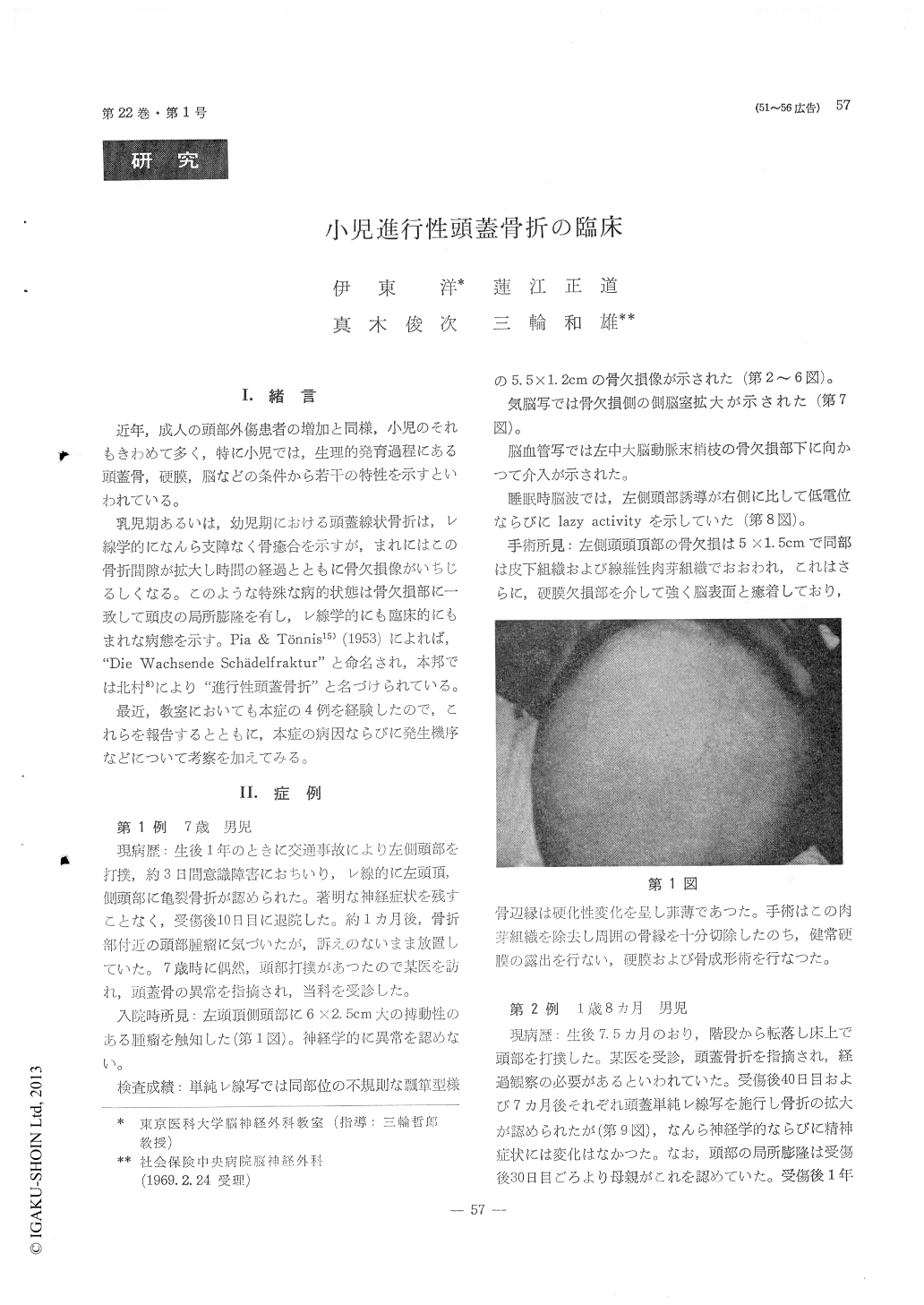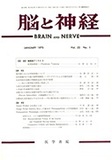Japanese
English
- 有料閲覧
- Abstract 文献概要
- 1ページ目 Look Inside
I.緒言
近年,成人の頭部外傷患者の増加と同様,小児のそれもきわめて多く,特に小児では,生理的発育過程にある頭蓋骨,硬膜,脳などの条件から若干の特性を示すといわれている。
乳児期あるいは,幼児期における頭蓋線状骨折は,レ線学的になんら支障なく骨癒合を示すが,まれにはこの骨折間隙が拡大し時間の経過とともに骨欠損像がいちじるしくなる。このような特殊な病的状態は骨欠損部に一致して頭皮の局所膨隆を有し,レ線学的にも臨床的にもまれな病態を示す。Pia & Tönnis15)(1953)によれば,"Die Wachsende Schädelfraktur"と命名され,本邦では北村8)により"進行性頭蓋骨折"と名づけられている。
In infants and children, the linear fracture of skull heals without the least interference, naturally.
Roentgenologically, a process of the bony fusion after fracture is completed within 6 to 12 months in children.
On the other hand, it is more than a few year in most of adult. Some cases of children, however, do not show bony fusion in routine process, and rather to grow wider fracture line or creater-like edge accompanying with localized skull protuber-ance.
Such rare phenomenon has been known so-called growing skull fracture or "Die Wachsende Schadel fraktur" on the radiological aspect. Here, we re-port 4 cases of this series.
So-called growing skull fracture occures in child-hood or infancy which have most active growth of the skull and the brain.
On the formation of the growing skull fracture, most important factor are the dural breaking and the cranial fissure. Taveras repeated other factor which have relation with this phenomenon, those factors are leptmeningeal cyst growning through dural tear, pulsation of brain and hyperproduction of cerebrospinal fluid. All of 4 cases were suffered from the head trauma in the first year of their life.
This phenomenon occured relatively in early stage after trauma. From the operating findings, we recognized the dural tearing in all cases. However, the cyst formation through dural slit was not al-ways presented. One case (case 3) showed leptome-ningeal cyst in type, but three cases (case 1, 2, 4) showed fibrous granulation interposing in dural defect instead of leptomeningeal cyst.
The latter was being adhered with brain surface through the dural defect. We considered structure of granulation, which may offer suitable step to condution of mechanical pressure of brain pulsation. This is important factor to formation of growing skull fracture with increase of mass of granulation.
We have reported 4 cases of growing skull fra-cture. Among many neurological symptoms, epi-lepsy is relatively high incidence. It was shown in only case 3.
On the diagnosis, the repeated roentgenological examination is the most important procedure for observation of growing protuberance after head injury.
The several factors concerning formation of this fracture have been discussed. We considered, the most significant factor is dural tearing, and pos-sible factor are mechanical pressure of pulsation of the brain or the cerebrospinal fluid and process caused increasing intracranial pressure.
The formation of granulation in local may give suitable step to conduction of various mechanical pressure for region of skull fracture.

Copyright © 1970, Igaku-Shoin Ltd. All rights reserved.


